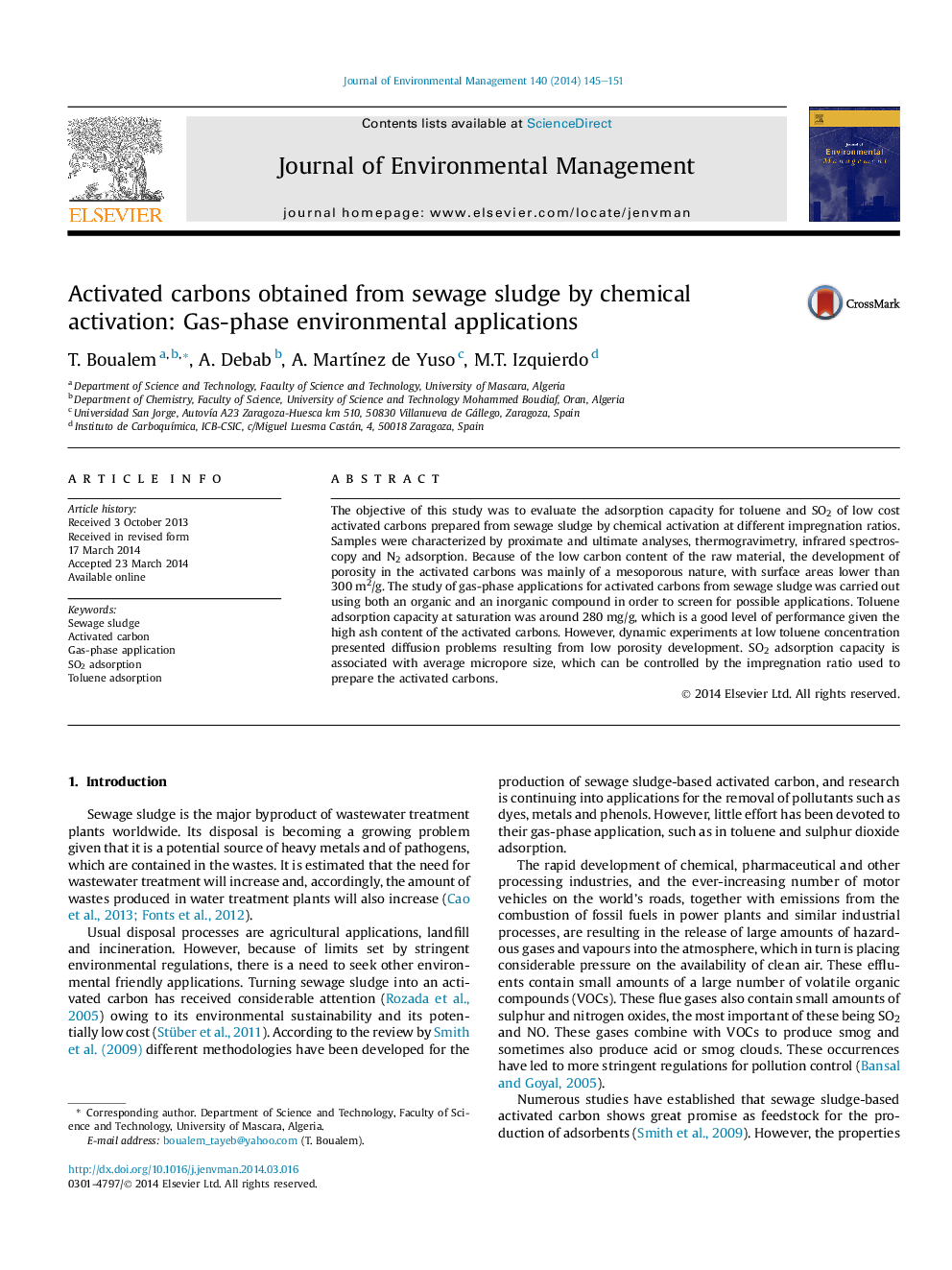| Article ID | Journal | Published Year | Pages | File Type |
|---|---|---|---|---|
| 7483931 | Journal of Environmental Management | 2014 | 7 Pages |
Abstract
The objective of this study was to evaluate the adsorption capacity for toluene and SO2 of low cost activated carbons prepared from sewage sludge by chemical activation at different impregnation ratios. Samples were characterized by proximate and ultimate analyses, thermogravimetry, infrared spectroscopy and N2 adsorption. Because of the low carbon content of the raw material, the development of porosity in the activated carbons was mainly of a mesoporous nature, with surface areas lower than 300Â m2/g. The study of gas-phase applications for activated carbons from sewage sludge was carried out using both an organic and an inorganic compound in order to screen for possible applications. Toluene adsorption capacity at saturation was around 280Â mg/g, which is a good level of performance given the high ash content of the activated carbons. However, dynamic experiments at low toluene concentration presented diffusion problems resulting from low porosity development. SO2 adsorption capacity is associated with average micropore size, which can be controlled by the impregnation ratio used to prepare the activated carbons.
Related Topics
Physical Sciences and Engineering
Energy
Renewable Energy, Sustainability and the Environment
Authors
T. Boualem, A. Debab, A. MartÃnez de Yuso, M.T. Izquierdo,
